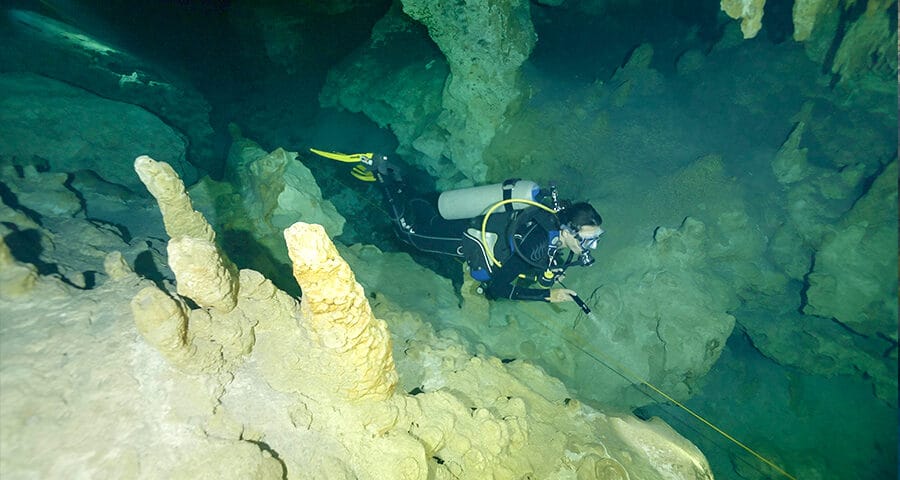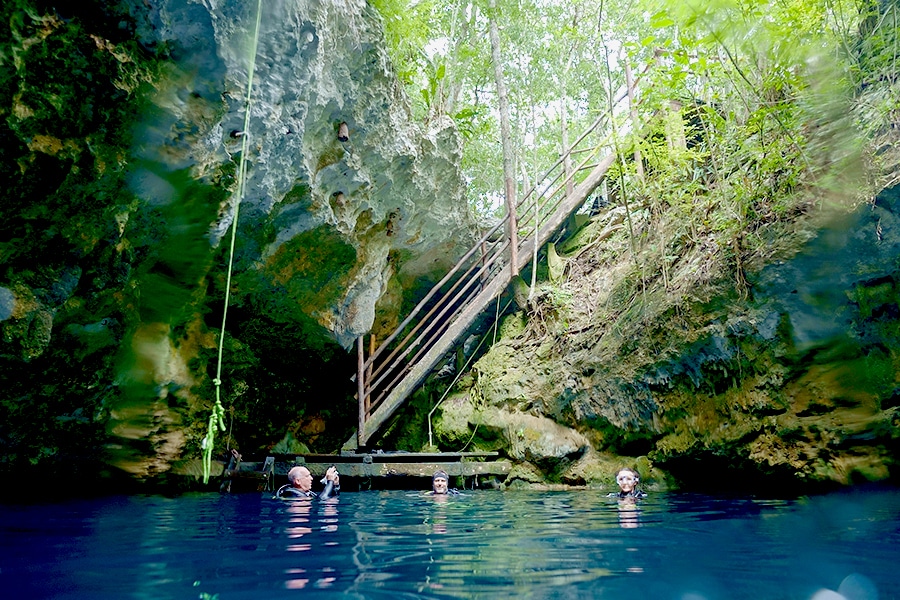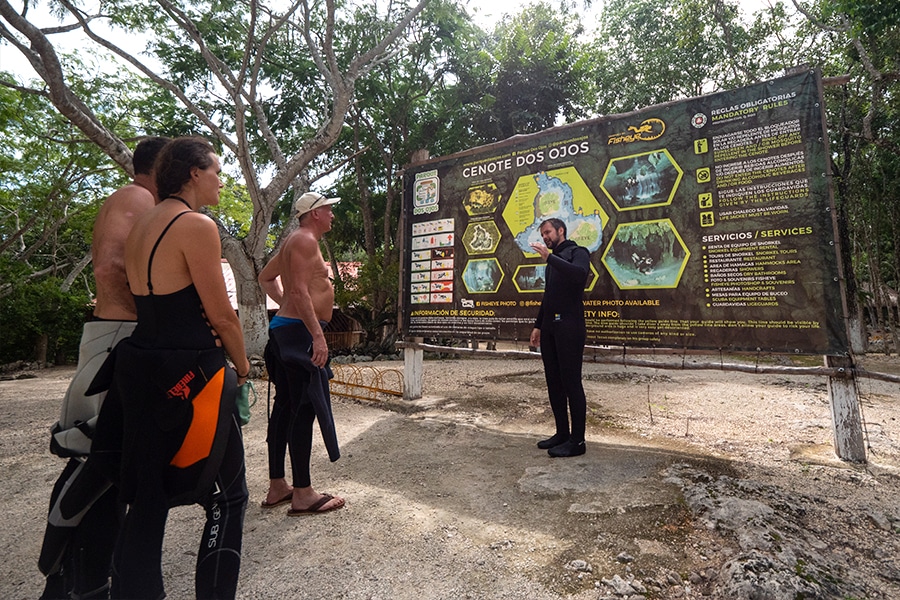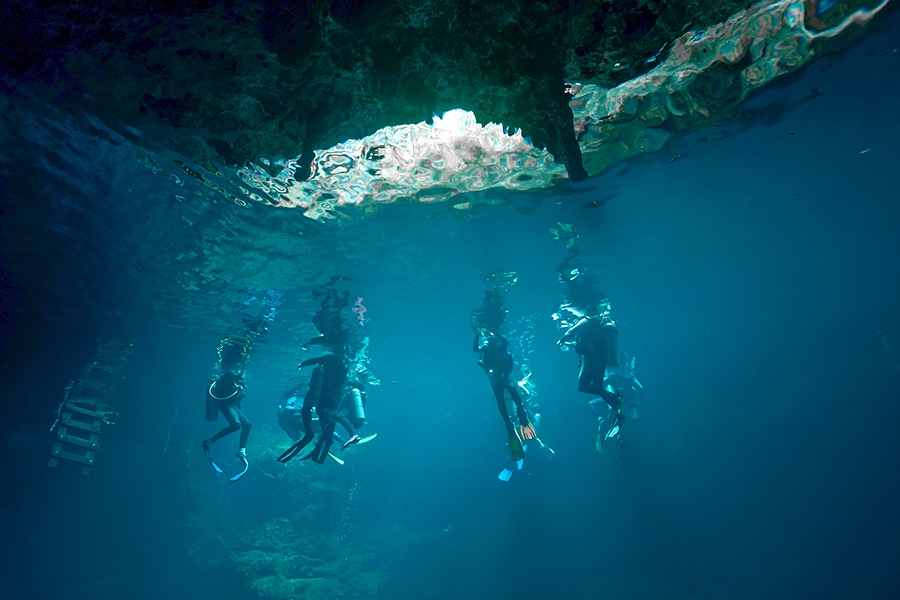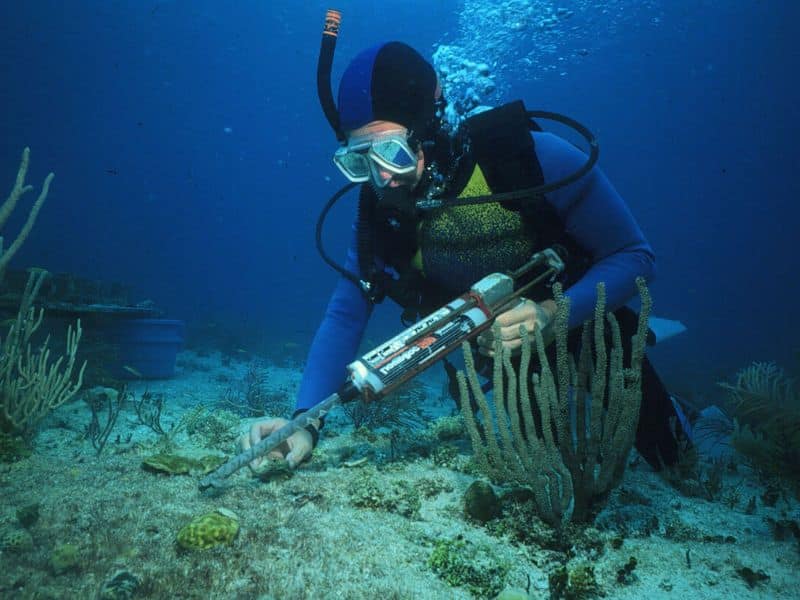2.2. Inside Dos Ojos Cenotes
At Cenote Dos Ojos, you’ll find two distinct dive routes, each offering a unique cave diving experience. Both are absolutely worth exploring, and both start at the same entry point.
Upon entering Cenote Dos Ojos, you’ll immediately find yourself in a massive chamber. The chamber floor is covered in white sand, and the dome above is adorned with colorful stalactites and stalagmites in shades of white, ocher, orange, and black. This natural display is a unique feature of Cenote Dos Ojos, as most other cenotes typically showcase geological formations in either white or black without such vibrant variations.
However, the most remarkable aspect of this chamber is the astonishing clarity of the water. In fact, if it weren’t for the bubbles you see, you might think you’re floating weightlessly in the air.
BARBIE CENOTE
For divers taking the Barbie Line route, the journey begins by heading to the right in search of the western eye of the cenote. You’ll pass through an expansive passageway and continue along another passage that runs alongside it.
This particular route is dubbed the Barbie Line due to a playful diver’s prank you’ll encounter halfway along the way. There, attached to the line, you’ll spot a Barbie doll being “attacked” by a crocodile.
It’s worth noting that this route forms a circular path, so when you reach the Barbie doll, you’ll know that you’re already on your way back from that point on. This is a good opportunity to check your pressure gauge and ensure you still have at least two-thirds of your tank’s air remaining. The route concludes where it started, and the maximum depth is approximately 8 meters/ 26 feet.
The Barbie Line offers a relatively easy and enjoyable diving experience. It is well-lit and relaxing, benefiting from ample sunlight from the western eye of the cenote. This makes it an excellent choice if you have any concerns about feeling claustrophobic. Moreover, you’ll have the chance to witness the captivating interplay of light as it refracts through the water.
This route also provides a fascinating journey through millions of years of the Yucatán Peninsula’s geological history, allowing you to marvel at the intricate speleothems that have taken millennia to form.
BATCAVE LINE
Divers embarking on the Bat Cave Line follow a similar starting point as the first dive but this time head to the left.
The Bat Cave Line, as the name suggests, leads to a colossal air-filled dome at the midpoint of the route. This dome is a unique feature as it hosts hundreds of bats hanging from the ceiling.
The dome is a well-ventilated space with a hole in the ceiling through which the bats come and go. It’s worth noting that this hole isn’t particularly large, though it is possible to emerge from it to the surface. As a result, all divers taking this route will experience the sensation of exploring a genuine cave, with no direct exit, rather than just a cavern.
To successfully navigate this route, it’s essential to possess strong finning skills and precise buoyancy control to avoid stirring up excessive sediment. Fortunately, the caves are expansive and beautifully adorned. Besides the incredible experience of observing the bats, this dive also provides the opportunity to discover numerous fossils and admire breathtaking underwater formations.
The dive concludes at the starting point and does not reach depths beyond 10 meters/33 feet.




